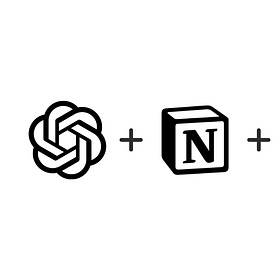We Thought We Were Empowering. We Got Robbed.
How IP theft gutted our business model—and what you better do before it happens to you.
Hi! This is Emma Brooks from ScaleWithAI writing to you today.
Let’s cut the fluff: IP theft nearly broke us. Not from some AI scraping headlines. From actual people. People we trusted.
We launched in 2024 with a clear mission: help entrepreneurs build custom GPTs fast. We believed in openness. Full access. No gatekeeping.
And for a while, that worked.
Until it didn’t.
One percent of subscribers,
just enough to feel invisible,
decided to strip our work bare,
rebrand it, and sell it at 10x the price.
No attribution. No license.
Just theft with a logo on top.
They didn’t want to learn.
They wanted a shortcut.
We were the shortcut.
That’s not empowerment. That’s exploitation.
And if you’re building digital IP, you’re next.
What Changed: We Stopped Playing Nice
We shut the open faucet.
No more downloadable prompt packs. No more plug-and-play PDFs.
Now? You access our tools inside ChatGPT. You get the results, but not the recipe.
We didn’t want to do this.
We had to.
And we spelled it out:
✅ Use our GPTs in your biz? Go for it.
❌ Resell them? Use them with clients without a license? Pretend it’s yours? You’re done.
Creators: if you’re still hoping “people will do the right thing,” you’re not building a business. You’re building bait.
"Complain about the way other people make software by making software."
— Austin Kleon, Steal Like an Artist
How to Protect Your Digital Work, Starting Yesterday
You don’t need a law degree. You need a backbone.
Here’s how to make stealing your stuff harder, louder, and more expensive:
Tag Your Images with Metadata
Substack lets you add alt text to images. Use it. Embed your name, URL, and license terms. It’s invisible to readers, but search engines see it.Utilise the Substack Image Watermark .
Click the 3 dots in the top corner of your image and select watermark and adjust accordingly.Use the © Symbol Like You Mean It
It’s not a forcefield—but it’s a warning shot. On Mac: Option + G = ©.
Slap it on slides, footers, image captions, anything public-facing.Publish Real Terms
“You bought this” doesn’t mean “you own this.”
Use Substack’s Custom Terms of Service.
Go to: Settings → Privacy → Custom terms of serviceAdd your own terms of service to your publication and while your their add you customised privacy policy too.
Make it clear what’s okay—and what’ll get someone banned.Deliver Through Platforms, Not Just PDFs
We stopped handing over raw prompt code. Now we deliver inside ChatGPT. Subscribers get results, not the blueprint. You can do the same using Notion, Airtable, or custom web tools.
Take This With You (Before Someone Takes From You)
Protect your IP with clear terms—in your product, and on your platform.
Brand your work—metadata, copyright marks, and licensing notices.
Don’t hand over your source code to strangers and call it empowerment.
If you’re building a product, act like it. Secure it. License it. Own it.
One Last Thing Before the Lawyers Freak Out
Disclaimer:
I’m not a lawyer.
This is me sharing what I’ve learned the hard way—14 years in the game, and yes, I’ve been burned.What you do with your IP is your call.
But if you're serious about protecting what you build, get legal advice. Real advice. From someone who knows the terrain.It’s not a cost.
It’s an asset.
And the sooner you treat it like one, the better.
The world doesn’t need more templates. It needs more creators with a spine.
Be smart. Be bold.
And stop letting thieves eat off your plate.
Keep Scaling,
How We Solved Our Substack Notes Content Problem (And Why You Might Need This Too)
I'm bouncing in my chair as I write this.






After reading your post Emma, I took what you wrote to heart and created a watermark for my AI art and my original artwork prints. Thank you for your hard-earned insight!